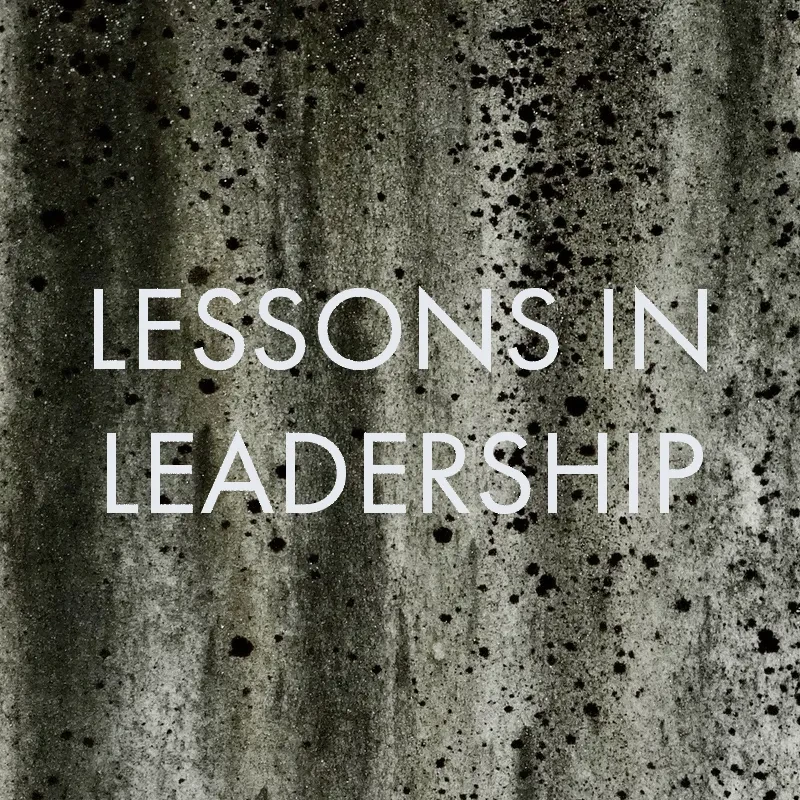
CONTEXT: CONNECTION
Michael LeFevre
Managing Editor, DesignIntelligence
April 4, 2024
DesignIntelligence unfreezes our music and embraces a new editorial mindset in 2024.
The profession of architecture has long been referred to as “frozen music.” As we turn the calendar year in 2024, DesignIntelligence’s editorial team turns to music—jazz and other forms—as a model for the future. To practice what we preach we have examined our own strategy to renew and re-validate our focus. In contrast to the prescribed themes of our DesignIntelligence Quarterlies over the last quarter century and in response to the changing world pace, we are shifting our approach to become more connected, agile, and integrated in our content. It’s time to thaw the frozen music. To chip away at the ice and drink its vital waters. We do this in concert with the themes of our Design Futures Council physical events, podcasts, webcasts, our feedback and firm work through DI Advisory, DI Learning and DI Foresight, and through listening to clients and the professions at large.
Our desired outcomes? A more responsive editorial stance for the road ahead. A curatorial method free to consider timely events and topics as they occur in the built environment we seek to influence. A move away from static plans to become nimbler. In the call-and-response tradition we seek the flexibility to develop riffs and weave fugues, recurring topics, and themes back into the discussion—and the action—to effect change. We seek to connect.
Reading context and climate as we go gives us the ability to change tempo, address discord and find harmonies. With our ears and minds open (and instruments in hand), we can sit back and listen to beautiful arias when they occur or offer cool instrumentals. In uncertain times, we can lay down a steady backbeat of content from experts around the world to move our global band in relevant directions.
In our intent to influence, do we wish to become yet another news source in a world teeming with data? Decidedly not. Reporting tweeting, blogging and responding in the moment to the minutia of events in the design professions is not our plan. Rather, as we have for 30 years, our focus remains to survey, assess, and share developing issues. We wish to influence leaders to stay relevant and resilient, so they are better able to lead their firms into uncertain futures. As one of the few organizations on earth with this mission we eschew prescriptive solutions in favor of letting our readers chart their own paths. In journalistic circles it is said: “Story Leads.” Thus, it is our perpetual quest to find and share those stories and meaningful content from the best minds in the business and let you, our readers, mold those ideas into your own.
Themes
Our 2024 annual focus is Connection, an ever-present mantra that allows us to explore connection, synergy, transformation and the shape of things. Under that umbrella, our six primary themes, each with the freedom to be considered in any of four DI Quarterlies, have connections to our physical events across the country and the world in 2024 and to our other content via webcasts, podcasts and other publications. They are:
- Leadership The Business of Design, Relevance and Resilience
- Technology Futures Artificial Intelligence, Applied Research, Innovation
- Organizational Futures New Organization & Business Forms, Alliances, Work, Workplaces, Value Propositions & Business Models
- Responsibilities Evolving Professional / Global / Regional / Local, Motivations & Incentives (Group & Individual), Housing, Homelessness, Society, Civility, Income Gaps, Climate Change Dynamics, Sustainability & The Environment
- Academy / Practice Gap Trans-industry and Transdisciplinary Collaboration, Professional Education, Development & Continual Learning, New Skills, Talent
- Economics & Investment Drivers of change1
As in symphonic works, we seek elaborate musical compositions in multiple movements, inclusive of the full orchestra of professionals and constituents. As in jazz, we wish to be characterized by improvisation, syncopation, and a regular forceful rhythm via our weekly articles and periodic podcasts, webcasts and events. To make our music we invite the best voices and players to come alongside and sit in.
Thus, DesignIntelligence embraces a new editorial approach by tailoring our content to allow greater responsiveness. In this first Quarterly of the year, we have asked more than a dozen “musicians” from the built environment professions to join our ensemble. Selected from current thinking and conversations, they are:
- Scott Simpson, who speculates on the impact of artificial intelligence on design thinking and the profession in his essay, Where Do We Go From Here?
- Paul Hyett’s look at Crushing Agendas in which he urges the convening of politics, sustainability and architecture in our greatest challenge yet.
- Paul Finch, who explores our Leadership thread by reminding us: Leaders Need Followers.
- My own look at technology’s march and the dawn of AI entitled, All For Intelligence.
- DeeDee Birch, whose article, The Biological Paradigm in the Technological Future explains the interrelationships of how artificial intelligence, immersive technologies and nature-based design can drive human-centered solutions.
- Julie Kim, program chair at Georgia Tech, who examines the gap between the academy and practice and offers practical solutions for what can be done about it.
- Gustav Magnusson, whose essay In The Making shares excerpted urban conversations and offers key insights into emerging issues from his soon-to-be-released book.
- Maisie Sargent Auld, from global consultancy Arcadis, who, in Shifting Decisions: Incorporating Embodied Carbon Emissions in Early Design, advocates for science-based targets and early carbon awareness.
- The self-avowed “old guy in modular construction”, FullStack Modular’s Roger Krulak, discusses modular construction in Changing the Game. In a discussion of a movement that has lingered in our industry’s shadows for decades, his approach brings together a deeper understanding of the issues in bringing a Lego-style mentality to the profession.
- Dena Prastos, whose interview Life at the Edge, examines her work at the land / sea intersection.
- A look back at January’s Leadership Summit on AI and innovation by Dave Gilmore entitled A Gathering Intelligence.
And finally, and most importantly, through these written syntheses of mind and hand, we hope that we connect with each of you, our community of leaders. As ever, our goal is to influence and inform your actions to lead and keep your organizations renewed, relevant and resilient.
We look forward to listening well, to bringing the right notes to life, and to hearing from you.
Join us as we play on.
Footnotes:
1 Regarding our sixth theme, economics and investment, our own Dave Gilmore recently justified its
perennial inclusion by paraphrasing dialogue from the film Godfather III:
“All I am is the hammer.”
“Money is a hammer. Politics is deciding when to use the hammer.”
Michael LeFevre, FAIA emeritus, managing editor, DI Media Group; principal, DI Advisory; senior fellow, Design Futures Council
2024 Q1 Book Contributors
Context: Connection - Michael LeFevre
A Gathering Intelligence - Dave Gilmore
Where Do We Go From Here? - Scott Simpson
Crushing Agendas - Paul Hyett
Letters from London: Leaders Need Followers - Paul Finch
The Biological Paradigm in the Technological Future - DeeDee Birch
In The Making - Gustav Magnusson
Life at the Edge - Dena Prastos
Changing the Game - Roger Krulak
Shifting Decisions: Incorporating Emdodied Carbon Emissions in Early Design - Maisie Sargent Auld
Rethinking Architecture Education (Learning from Practice) - Julie Ju-Youn Kim
All for Intelligence - Michael LeFevre
Higher Purpose - Craig Goldblatt























































